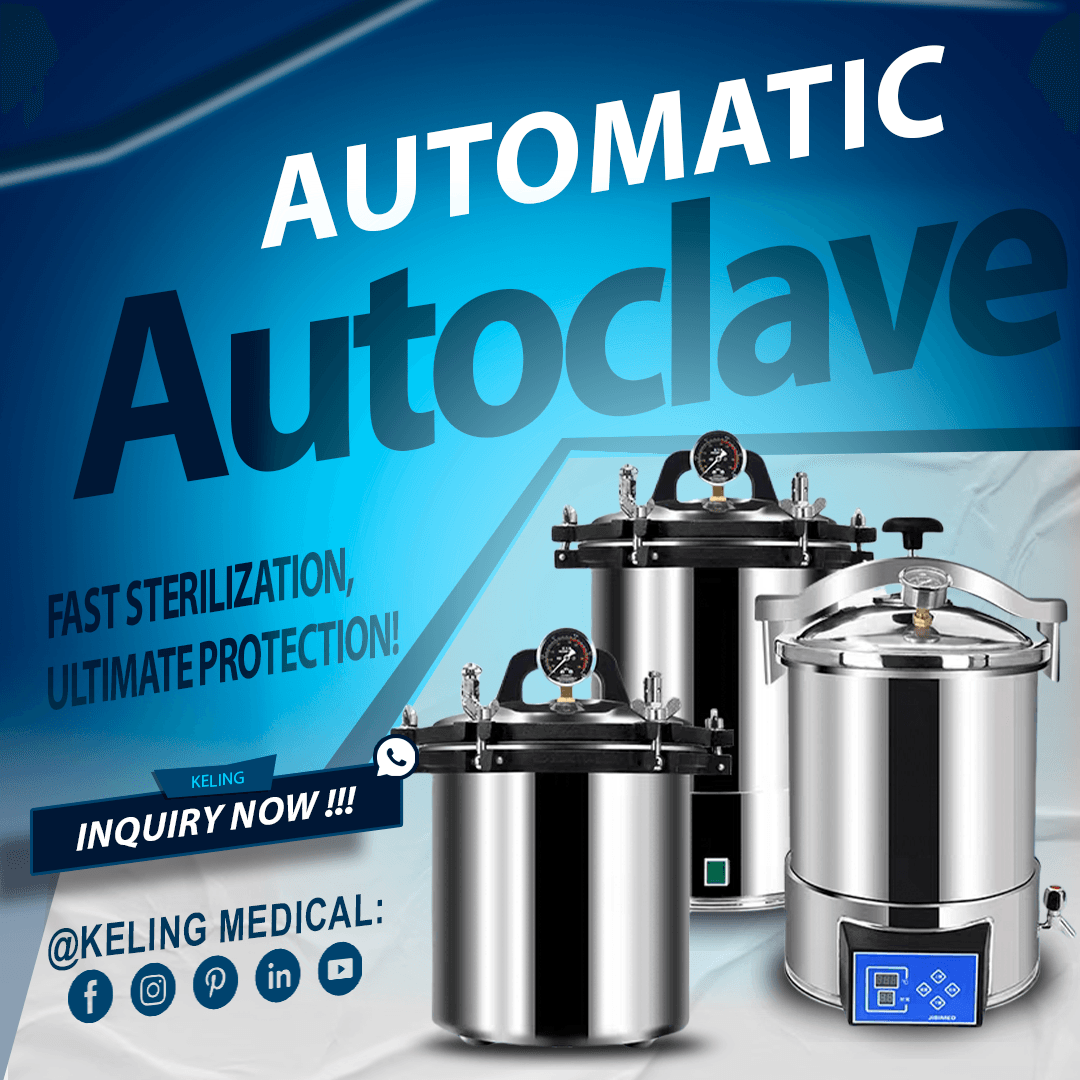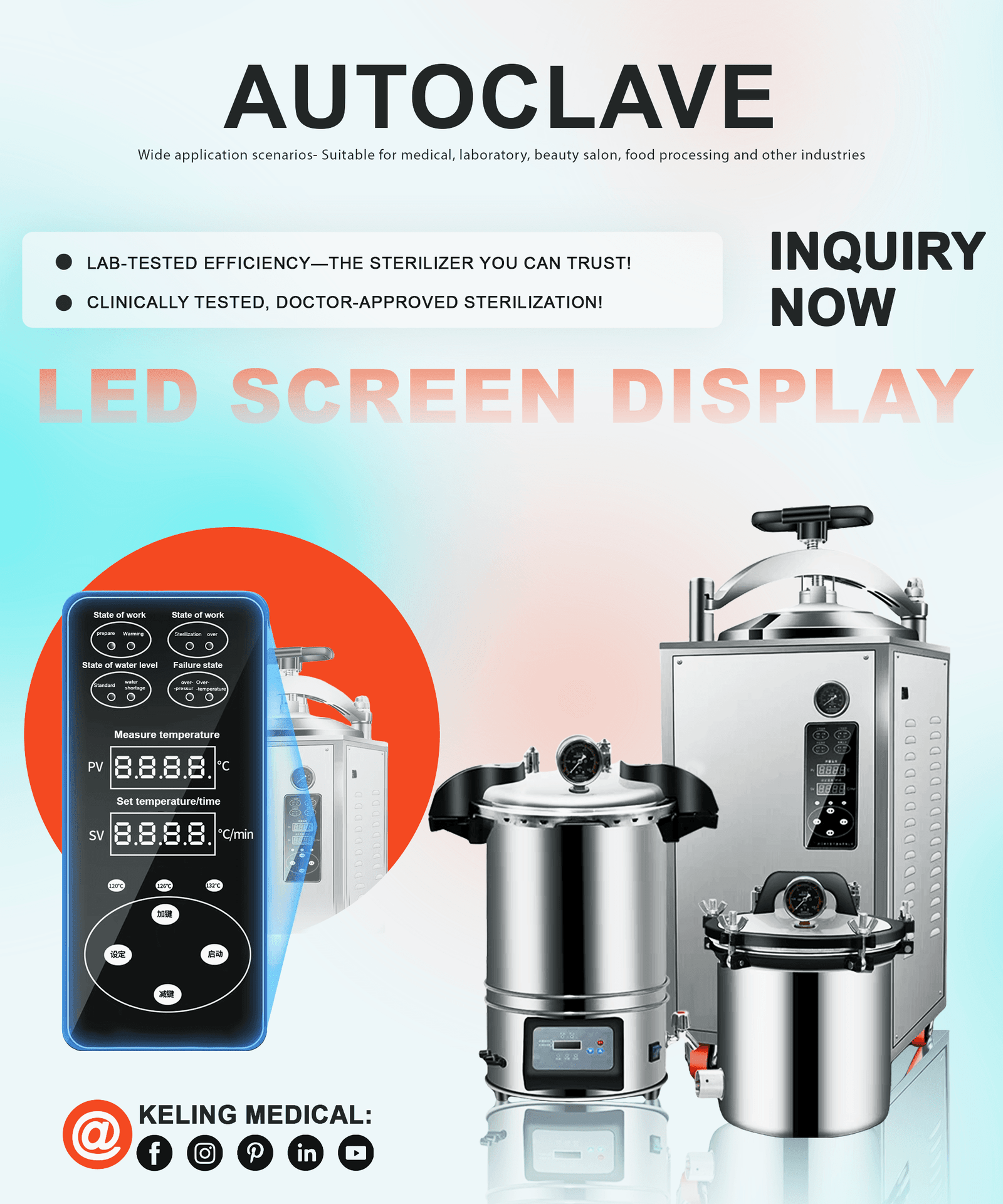
This complete guide will show you all essential information regarding lab autoclaves including their operating principles and how to select the best model. This article delivers valuable insights which will empower distributors, resellers, and procurement professionals to make informed decisions and improve client service.
High-pressure steam sterilization in lab autoclaves effectively decontaminates medical instruments, glassware, and various laboratory supplies. The sterilization process eliminates dangerous microorganisms which helps prevent both contamination and infection. Below are essential reasons why lab autoclaves play a crucial role in laboratories.
Complete Sterilization: Autoclaves represent the most efficient sterilization process because they destroy bacteria, viruses, fungi and spores.
Regulatory Compliance: Strict regulatory standards apply to the sterilization processes essential for healthcare and pharmaceutical industries.
Versatility: Lab autoclaves have the capability to sterilize various materials such as surgical instruments along with laboratory glassware and waste products.
Cost-Effective: Autoclaves extend the service life of reusable medical instruments which minimizes the necessity for regular replacements.
Lab autoclaves sterilize materials through steam-based methods. Here’s a step-by-step breakdown of the process:
Loading: Sterilization items go into the autoclave chamber where they stay during the process.
Sealing: The chamber gets sealed to ensure it becomes airtight.
Heating: The autoclave system heats water to generate steam and then increases pressure to achieve temperatures between 121°C and 134°C.
Sterilization: Steam at high pressure enters the items and destroys every microorganism present.
Cooling and Drying: The sterilization chamber undergoes a cooling process followed by drying of items before they can be taken out.
Lab autoclave selection requires knowledge of all available types.
Gravity Displacement Autoclaves: Gravity displacement autoclaves are designed to sterilize solid and non-porous items effectively. They work by displacing air with steam.
Vacuum Autoclaves: Vacuum autoclaves are designed to sterilize porous materials and instruments that have complex shapes. The vacuum pump functions to eliminate air before steam introduction.
Benchtop Autoclaves: These benchtop autoclaves offer portability and compactness making them ideal for small laboratories that lack space.
Vertical Autoclaves: Autoclave models designed for medium to large laboratory sterilization operations provide a bigger chamber capacity.
Horizontal Autoclaves: Hospitals and large research facilities frequently use these autoclaves to perform high-volume sterilization.
The following features should guide your selection process when choosing a lab autoclave.
To select a lab autoclave that fulfills your requirements, consider these essential features.
Chamber Size: Select an autoclave chamber size that matches your sterilization requirements.
Cycle Options: Opt for autoclave models that provide multiple sterilization cycles for processing different material types.
Ease of Use: Automated processes and intuitive controls help both increase efficiency and minimize mistakes during operation.
Safety Features: The autoclave should include safety features such as pressure release valves and temperature control systems.
Durability: High-quality materials and construction ensure long-term reliability.
Energy Efficiency: Energy-efficient models can help reduce operational costs.
Multiple industries incorporate lab autoclaves into their operations.
Healthcare: Sterilizing surgical instruments, dressings, and medical waste.
Pharmaceuticals: Ensuring sterile production environments and equipment.
Research Laboratories: Sterilizing glassware, culture media, and tools.
Veterinary Clinics: Sterilizing instruments used in animal care.
Food and Beverage: Containers and tools employed in food production require sterilization processes.
Enhanced Safety: The sterilization process removes dangerous microorganisms which decreases the chance of infections.
Cost Savings: Prolongs the lifespan of reusable instruments.
Environmental Impact: Lab autoclaves help decrease the usage of single-use medical instruments which leads to less waste production.
Time Efficiency: Modern autoclaves offer quick sterilization cycles.
The safe and sterile operation of healthcare, research and industrial environments depends on lab autoclaves as fundamental tools. Medical equipment distributors must understand lab autoclave types, features, and applications to meet their clients’ demands and maintain market competitiveness.
Reach out to Keling Medical now to find premium lab autoclaves. Our team stands prepared to help you discover the ideal sterilization solution that fits your requirements.
Most lab autoclaves have a lifespan of 10-15 years, depending on usage and maintenance.
Regular maintenance should be performed every six months to ensure optimal performance.
No, materials like certain plastics and electronics may not withstand the high heat and pressure of an autoclave.
A lab autoclave uses steam under pressure, while other sterilizers may use methods like dry heat, gas, or chemicals.
Consider your sterilization volume and the size of the items you need to sterilize. For high-volume needs, opt for larger horizontal models.
For more information, contact us today:
Email: inquiry@shkeling.com
WhatsApp: Click here to chat
Website: https://autoclaveequipment.com/

Introduction Autoclave machines used in hospitals are one of the most important investments in healthcare infrastructure, serving as the first line of defense against healthcare-associated infections. Sophisticated sterilization equipment is

The autoclaving process serves as an essential sterilization practice utilized across medical, laboratory, and research facilities to protect glassware and instruments through effective sterilization. High-pressure steam eliminates pathogens during this

The autoclaving process serves as an essential sterilization practice utilized across medical, laboratory, and research facilities to protect glassware and instruments through effective sterilization. High-pressure steam eliminates pathogens during this

The autoclaving process serves as an essential sterilization practice utilized across medical, laboratory, and research facilities to protect glassware and instruments through effective sterilization. High-pressure steam eliminates pathogens during this

The autoclaving process serves as an essential sterilization practice utilized across medical, laboratory, and research facilities to protect glassware and instruments through effective sterilization. High-pressure steam eliminates pathogens during this
The autoclaving process serves as an essential sterilization practice utilized across medical, laboratory, and research facilities to protect glassware and instruments through effective sterilization. High-pressure steam eliminates pathogens during this